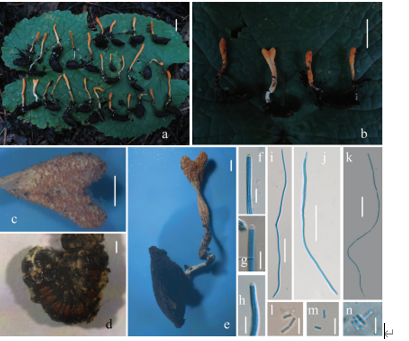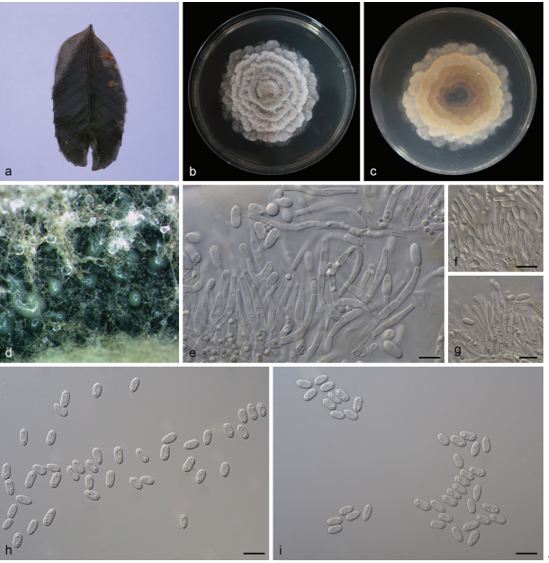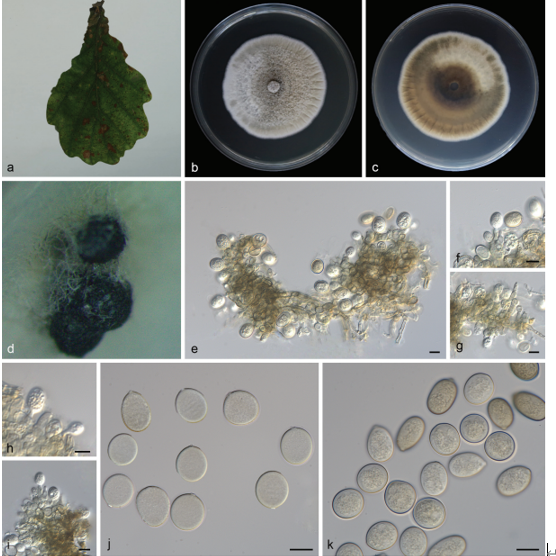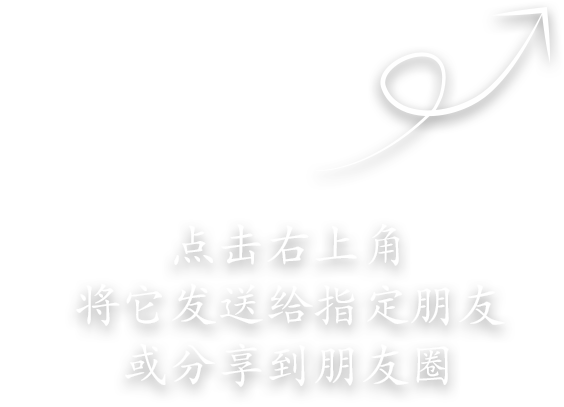Tomentella efibulata H.S. Yuan & Y.C. Dai 2020
Index Fungorum number: IF555695; Facesoffungi number: FoF 05616
Holotype: CHINA, Liaoning Province, Huanren County, Laotudingzi Nature Reserve, on rotten angiosperm wood debris, 21 October 2015, Yuan 10699 (IFP 019269, holotype); Qingyuan County, Experimental Station of Forest Ecology, on rotten angiosperm wood debris, 3 August 2016, Yuan 11167 (IFP 019270).
Morphological description
Basidiocarps annual, resupinate, easily separated from the substrate, pelliculose, without odour or taste when fresh, 0.2–0.3 mm thick, continuous. Hymenophoral surface smooth to indistinctly granulose, dark brown (6F5–7), darker than or concolorous with subiculum when dry. Sterile margin often indeterminate, byssoid or fimbriate, paler than hymenophore. Subiculum mostly yellowish brown. Rhizomorphs present in subiculum and margins, 10–40 μm diam; rhizomorphic suraface more or less smooth; hyphae in rhizomorph monomitic, undifferentiated, of type B, compactly arranged and of uniform; single hyphae simple septate, thick-walled, unbranched, 1.5–2.5 μm diam, pale yellow in KOH, cyanophilous, inamyloid. Subicular hyphae monomitic; hyphae simple septate, thick-walled, occasionally branched, 3–5 μm diam, occasionally collapsed and encrusted, pale yellow in KOH, slightly cyanophilous, inamyloid. Subhymenial hyphae simple septate, thin- to slightly thick-walled, frequently branched, 2.5–5.5 μm diam; hyphal cells more or less uniform, pale yellow in KOH, slightly cyanophilous, inamyloid. Cystidia absent. Basidia 40–70 μm long and 5–10 μm diam at apex, 3–5 μm at base, simple septate at base, clavate, stalked, sinuous, rarely with transverse septa, pale yellow in KOH, pale yellow in distilled water, 4-sterigmate; sterigmata 3–7 μm long and 1–1.5 μm diam at base. Basidiospores thick-walled, (5.5–)6–8.2(–8.5) × (5–)5 .2–7.3(–7.5) μm, L = 6.94 μm, W = 6.63 μm, Q = 1.04–1.12 (n = 60/2), subglobose to bi-, tri- or quadra-lobed in frontal view and ellipsoid in lateral view, echinulate, greyish yellow in KOH, reddish yellow in distilled water, cyanophilous, inamyloid; echinuli usually grouped in 2 or more, up to 0.3 μm.
Habitat: On rotten angiosperm wood debris.
Distribution: In China.
GenBank Accession: ITS: KY686228, KY686229; LSU: MK446359, MK446360.
Notes: Tomentella africana Yorou & Agerer is similar to T. efibulata by having continuous basidiocarps separable from the substrate, a dark brown and granulose hymenophoral surface, frequently simple septate hyphae, the presence of rhizomorphs in subiculum and margin, and basidiospores of approximately the same size and shape. However, T. africana is differentiated by its subicular and subhymenial hyphae with clamp connections and differentiated rhizomorphs of type C (Yorou and Agerer 2008). T. badia (Link) Stalpers resembles T. efibulata by having continuous basidiocarps with a smooth to granulose hymenophoral surface of similar colour, simple septate and thick-walled hyphae, the absence of cystidia, and irregular globose to lobed, echinulate basidiospores. However, T. badia differs by having basidiocarps adherent to the substrate, the absence of rhizomorphs, and bigger basidiospores (8–11 μm, Kõljalg 1996).
Reference: Hai‑Sheng Yuan1,2· Xu Lu1,2 · Yu‑Cheng Dai3 ·
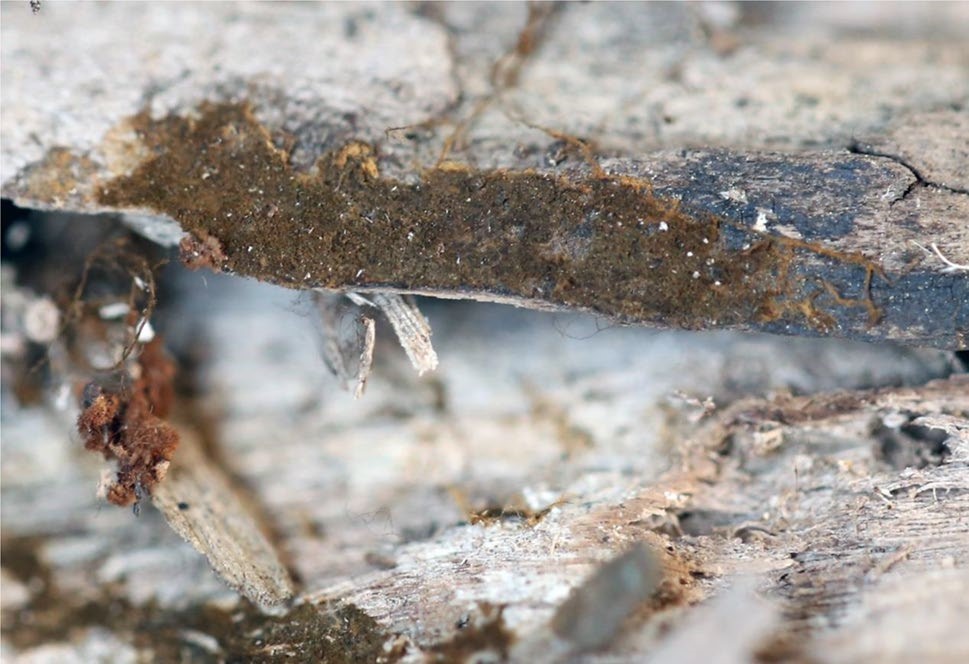
A basidiocarp of Tomentella efbulata (IFP 019269, holotype)


